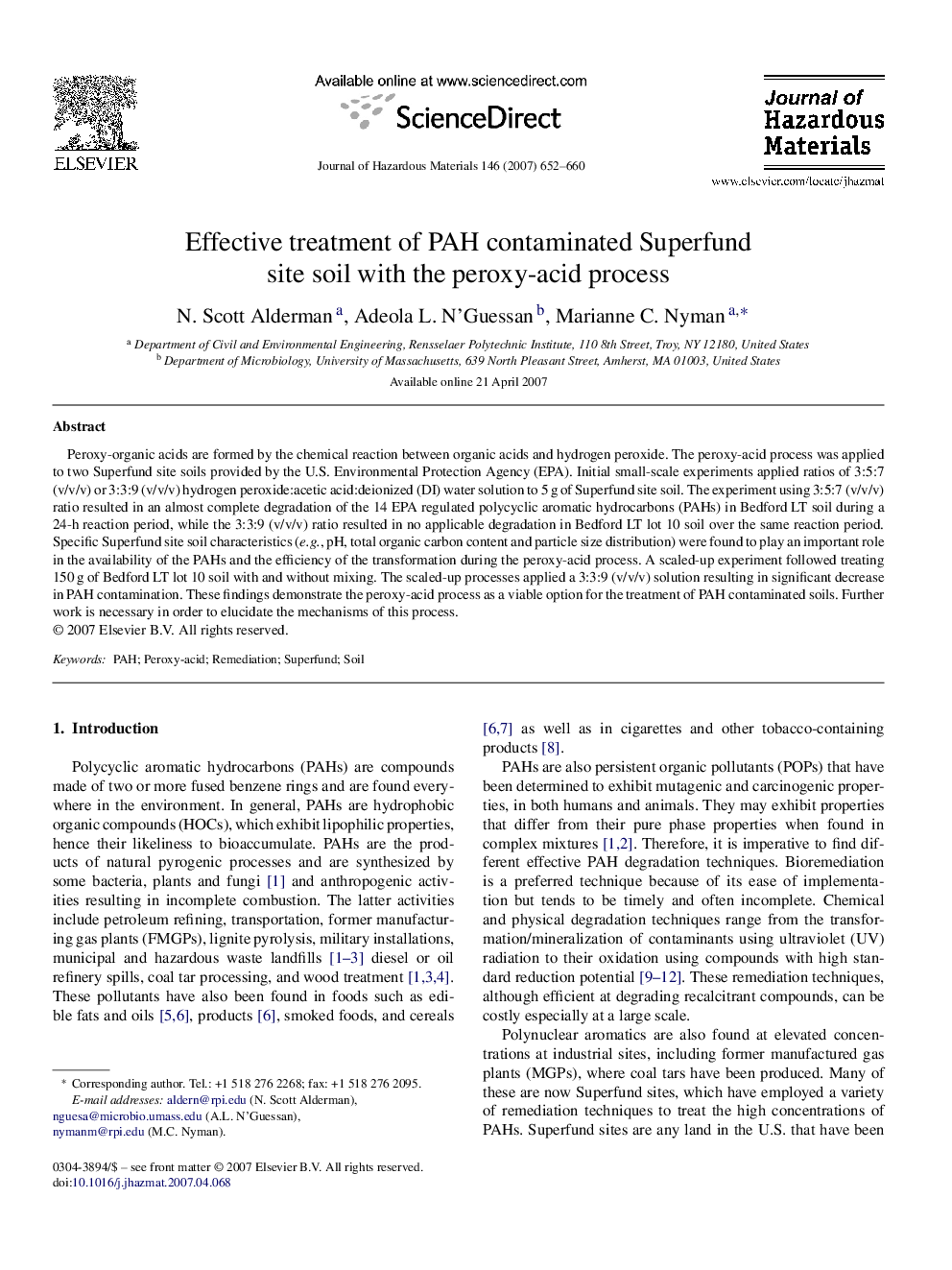| Article ID | Journal | Published Year | Pages | File Type |
|---|---|---|---|---|
| 584646 | Journal of Hazardous Materials | 2007 | 9 Pages |
Abstract
Peroxy-organic acids are formed by the chemical reaction between organic acids and hydrogen peroxide. The peroxy-acid process was applied to two Superfund site soils provided by the U.S. Environmental Protection Agency (EPA). Initial small-scale experiments applied ratios of 3:5:7 (v/v/v) or 3:3:9 (v/v/v) hydrogen peroxide:acetic acid:deionized (DI) water solution to 5Â g of Superfund site soil. The experiment using 3:5:7 (v/v/v) ratio resulted in an almost complete degradation of the 14 EPA regulated polycyclic aromatic hydrocarbons (PAHs) in Bedford LT soil during a 24-h reaction period, while the 3:3:9 (v/v/v) ratio resulted in no applicable degradation in Bedford LT lot 10 soil over the same reaction period. Specific Superfund site soil characteristics (e.g., pH, total organic carbon content and particle size distribution) were found to play an important role in the availability of the PAHs and the efficiency of the transformation during the peroxy-acid process. A scaled-up experiment followed treating 150Â g of Bedford LT lot 10 soil with and without mixing. The scaled-up processes applied a 3:3:9 (v/v/v) solution resulting in significant decrease in PAH contamination. These findings demonstrate the peroxy-acid process as a viable option for the treatment of PAH contaminated soils. Further work is necessary in order to elucidate the mechanisms of this process.
Keywords
Related Topics
Physical Sciences and Engineering
Chemical Engineering
Chemical Health and Safety
Authors
N. Scott Alderman, Adeola L. N'Guessan, Marianne C. Nyman,
